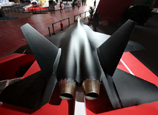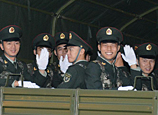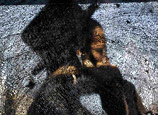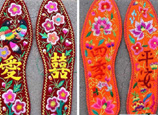In a hectic world of fast food, quick coffee and speed dating, leisurely ancient tea culture and the tea ceremony (cha dao) are finding young converts who want to slow down, reflect and smell the tea.
A tea leaf may weigh next to nothing, but dedicated tea drinkers say it can bring pleasure and peace, in a respite from a busy day. With a little meditation, tea offers more than aroma, taste and a bit of caffeine.
Tea can be enjoyed both formally and in a relaxed way.
The tea ceremony, or cha dao (2èμà), is a ritualized way of making tea that combines art with brewing, and every step from preparation to serving is part of a performance. Etiquette and the proper tea pot, cups and utensils also play important roles in the performance.
Cha dao is a way of socializing, or it can be useful for meditation and reflection. To perform a proper tea ceremony, it's not necessary to have a large, elaborate space; a quiet corner at home is fine, as long as it's a place where people feel relaxed, such as a living room or study, says Jiang Yi, who has been studying cha dao since 2005. With just a small, palm-sized pot and a cup, some hot water and a favorite tea, anyone can lower their stress and enjoy the beverage.
Tea ceremony as a lifestyle can be enjoyed by everyone, though not many young people favor this way of unwinding and prefer beverages with a more straightforward taste.
"Young people have less life experience, while tea is just like life," says Shi Jue, founder of the China Intangible Cultural Heritage Protection Fund. "Tea has a rich texture, not just the subjective experience of the presentation."
Still, some young people are taking up tea culture.
Jiang, who's in her 30s, runs a factory and says she becomes happier as she learns more about tea. "The culture is so rich that you can never finish learning about it," she says.
Jiang drinks tea every day. It's not addiction, but a way of life. She can spend 10 or 15 minutes to calm down and brew some tea.
"Having the opportunity to stop for a moment in life is very nice, and your own pace slows as well," she says.
Originally, tea was used as a medicinal herb and cooking ingredient. The art of tea making started in the Tang Dynasty (AD 618-907) and people considered it a way to cultivate the mind and spirit.
From noblemen to monks, scholars to ordinary people, almost everyone would drink tea and it became very common, certainly appreciated because it improves alertness. Scholars and writers started to combine preparing and savoring tea with writing and poetry.
Tang Dynasty writer Lu Yu (AD 733-804) is known as "Sage of Tea" for his contribution to Chinese tea culture. He wrote "The Classic of Tea," or "Cha Jing," the very first monograph on tea in the world, including chapters on its origin, history, implements, methods of preparation and other subjects.
In the Song dynasty (960-1279), tea was one of the most important export both by land and sea, and Chinese teas found their way to Arabia and even Africa.
Japanese monk My¨-an Eisai came to China in the Southern Song Dynasty (1127-1279) to study Zen Buddhism and returned home in 1193, taking tea from China to Japan. It was the beginning of tea cultivation and tea culture in Japan.
The most important part of cha dao is not all about expensive equipment and tea leaves. It varies with different people.
Though Chinese people have many standards and forms of etiquette for drinking tea, it is not religious, but a necessary part of life.
"The most important thing of cha dao is inspiration to the heart," says Shen Jiong, founder of Ji Xiang Cao Tang (Auspicious Thatched Cottage), a tea house on Yuyuan Road.
Shen opened Ji Xiang Cao Tang in the spring of 2011, hoping to provide a cultural platform for everyone with tea as the medium.
【1】 【2】
Recommendations:
News we recommend






























 Landmark building should respect the public's feeling
Landmark building should respect the public's feeling


![]()
